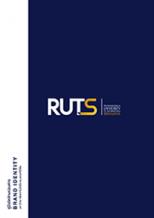NEWS: Preserving Phom Nang Seaweed (Yam Sai) from vanishing
Academic Services Unit, RMUTSV has created modal farm for preserving Phom Nang Seaweed (Yam Sai), an outstanding Product of Koh Yo, Meuang, Songkhla from vanishing.
Academic Services Unit, Rajamangala University of Technology Srivijaya (RMUTSV) has rehabitated Gracilaria Fisferi or Phom Nang seaweed, an outstanding plant of Koh Yo, Meuang, Songkhla. In doing so, the unit has built a modal farm for cultivating Phom Nang seaweed in fishery floating baskets, Koh Yo. This project was initiated by Dr. Somrak Rodjaroen (head of the project), Asst. Prof. Apirak Songrak, Asst. Prof. Chutinut Sujarit, Mr. Nikom Onsri, Mr. Supawat Inkerd, and Ms. Kattinat Sagulsawasdipan, from the Faculty of Fisheries and Science Technology, Rajamangala University of Technology Srivijaya.
Phom Nang seaweed locally called Sai is regarded as a cash crop of Koh Yo, Songkhla. It is generally found in tidal and submerged areas, living by attaching to floating objects: seashells, gravels, for example. Besides, the seaweed is also used as one of the main ingredients of Yam-Sai-Koh-Yo or Phom Nang seaweed spicy salad, the local dish expressing the identity of this area. This unique dish is well created by the local wisdom of Koh Yo natives, so that it is promoted to be the quality product for visitors.
Not only its good taste, but the seaweed is also rich of protein, carbohydrate, dietary mineral, especially iodine and vitamin, for instance. Medically, it can be extracted for producing medicines treating gastritis, constipation, and goiter. Moreover, its jelly can be transformed for encapsulating medicine powder relieving those who suffer from gastroparesis, inflammatory bowel diseases, hemorrhoid, palpitation, hypertension, atherosclerosis, arthritis, as well as obesity.
The extinction of Sai (Phom Nang seaweed) in Koh Yo was reported by fishermen having been selling Phom Nang spicy salad to the visitors around Leam Por temple almost 20 years. They revealed that Phom Nang seaweed nowadays cannot be found in the lake or nearby. Hence, they have to order it from Pattani in higher price. They further predict that Yam Sai seaweed might really extinct from Koh Yo.
To preserve Phom Nang seaweed, the main ingredient of Yam Sai, Academic Services Unit, RMUTSV, therefore, has extremely cultivated Phom Nang seaweed in the fishery floating baskets sized 3 x 3 meters by using a method called “Hanging-long line” providing the seaweed’s holding-platform. It grows well in both deep and shallow sea areas, as it weight can increase up to 2-3 times of its original weight.
Considering its features, it has large lines and beautiful color. The factor affecting to the well growth of the seaweed is the release of food wastes from white-sea bass farming in Koh Yo. That is to say, cultivating seaweed together with white-sea bass framing can reduce the rate of waste water in the sea.
In addition, it can be noticed that many marine larvae such as shrimp and fish live in the clump of seaweed, indicating that this cultivating method is suitable for the growth of seaweed. For this reason, the method can help develop and promote Koh Yo agriculturists to cultivate Phom Nang seaweed in order to conserve Yam-Sai-Koh-Yo to be the local heritage of the natives forever.
